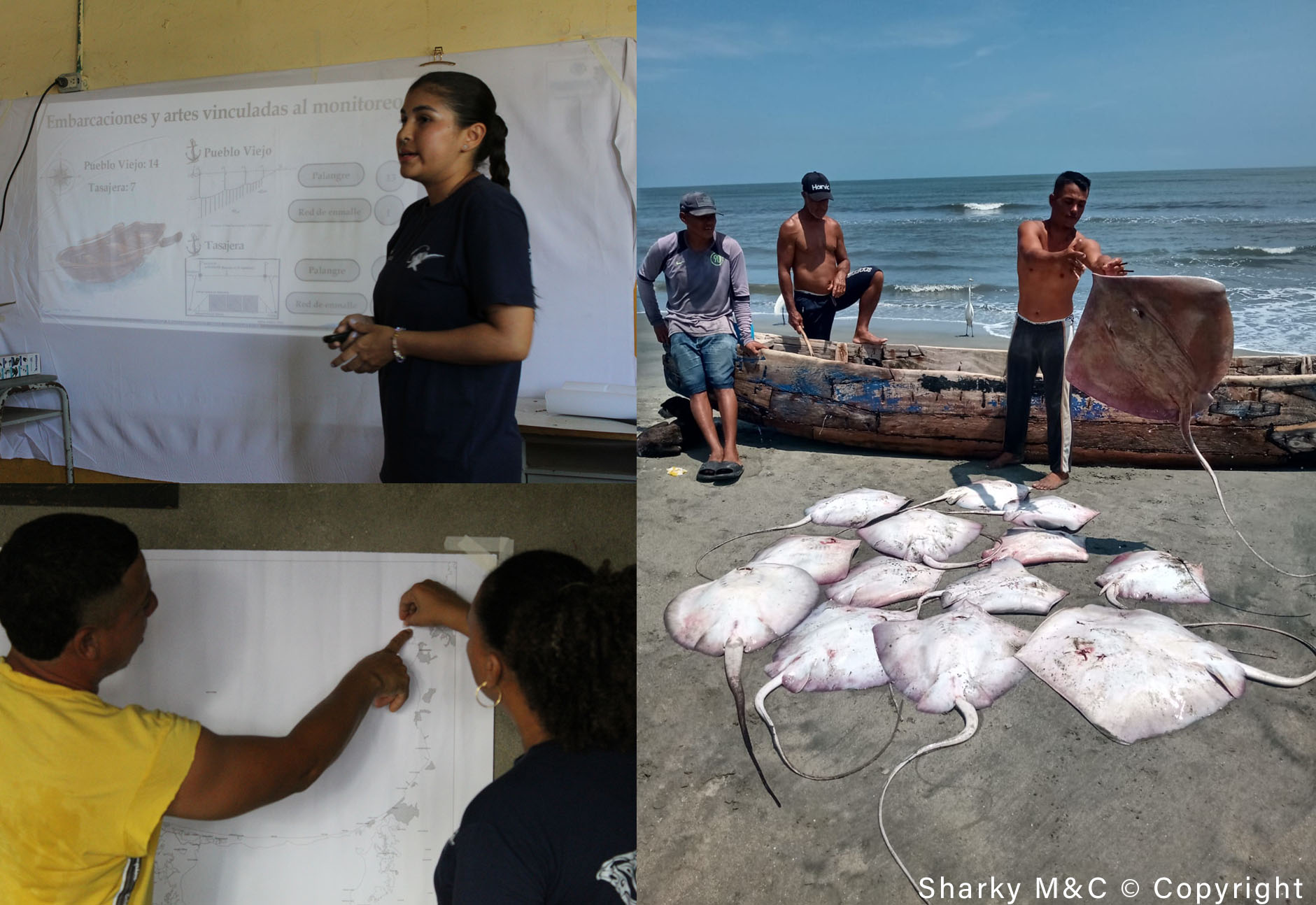Fishing for Knowledge: Fishers Share Local Wisdom to Protect Rays in the Colombian Caribbean
In the heart of the Colombian Caribbean, small-scale fishers and scientists are joining forces to protect rays, one of the ocean’s most overlooked but essential species. These animals, often caught accidentally in fishing gear, play an important role in keeping marine ecosystems balanced. Now, through a collaborative project led by Dr. Carlos Polo, with support from the Save Our Seas Foundation, Sharky Management and consulting and students from Universidad Jorge Tadeo Lozano, local knowledge and science are working hand in hand to find solutions.
The project aims to understand how rays are being caught (intentionally or as bycatch) and explore practical ways to reduce pressure on vulnerable species while supporting sustainable fishing practices. Monitoring has been carried out across fishing communities. While overall landings have declined due to weather and cultural events, by late August more than 120 whip stingrays (Hypanus guttatus) were recorded, making it the most commonly landed species. Other catches included crucifix sea catfish (Sciades proops), barracuda (Sphyraena guachancho), and even a landing of sharks including bonnetheads, nurse sharks, and Carcharhinus sp species.
Beyond the numbers, the heart of the project lies in its workshops with fishermen’s. These sessions began with open dialogue and trust-building activities, making it clear that the project is not about enforcement but about learning together. Fishers mapped past and present fishing hot spots, clarifying that both the abundance and size of rays have declined sharply over the past 10 – 15 years.
Discussions then turned into fishing gear. With guidance from experts, fishers brainstormed ideas such as raising longlines, testing circle hooks, or using frozen bait strategies that could reduce ray catches without harming livelihoods. By the end of the session, three fishers volunteered to pilot these methods, showing their commitment to change. What emerged from these workshops was more than data collection, it was a partnership. Fishers openly acknowledged the changes they have witnessed in ray populations and showed a willingness to adapt if the solutions are fair and beneficial. Together, science and tradition are paving the way for fishing practices that protect both ocean health and the future of coastal communities.

Photo © Sharky M&C
